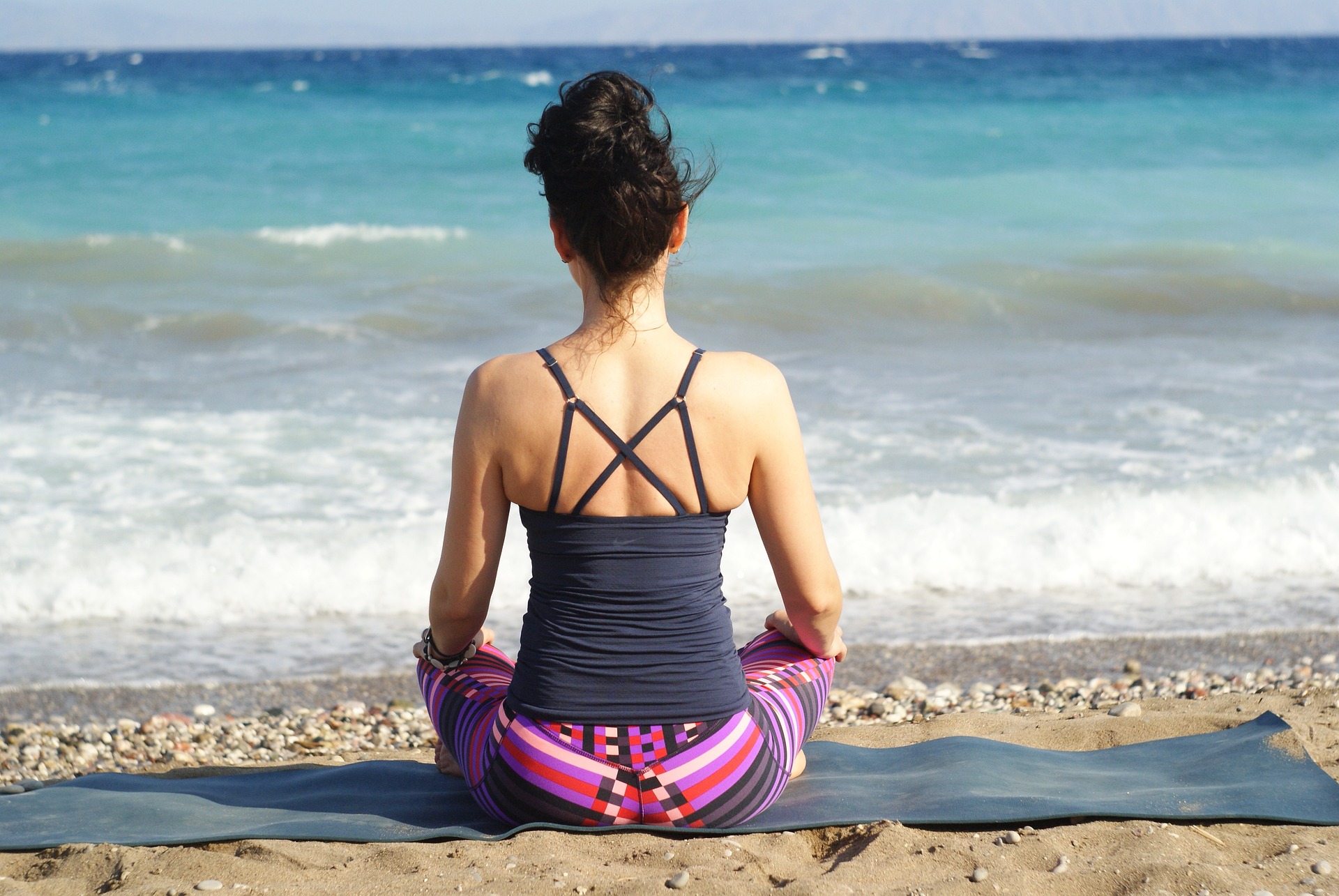Meditation, rooted in ancient traditions, has been embraced by modern society for its numerous benefits to mental, emotional, and physical well-being. This comprehensive guide delves deeply into the practice of meditation, covering its history, benefits, techniques, and how to overcome common challenges. By the end of this guide, you will be well-equipped to start or enhance your meditation journey.
Understanding Meditation
History of Meditation
Meditation has a rich history spanning several millennia and diverse cultures. The earliest records of meditation date back to ancient India, where it was practiced as part of the Hindu tradition. Over time, meditation practices spread to other parts of Asia, including China and Japan, becoming integral to Taoist and Buddhist traditions. In the West, meditation gained popularity in the 20th century, thanks in part to the counterculture movement and the growing interest in Eastern philosophies.
Types of Meditation
There are numerous types of meditation, each with its unique focus and techniques. Some of the most popular types include:
- Mindfulness Meditation focuses on being present in the moment and observing thoughts and sensations without judgment.
- Transcendental Meditation involves the use of a mantra to transcend ordinary thought processes.
- Loving-Kindness Meditation (Metta) focuses on cultivating an attitude of love and compassion towards oneself and others.
- Body Scan Meditation involves paying attention to different parts of the body in a systematic manner.
- Zen Meditation (Zazen) emphasizes the observation of thoughts and experiences without attachment.
- Vipassana Meditation aims to see things as they really are through deep observation and insight.
Scientific Benefits of Meditation
Research has shown that meditation offers numerous benefits, including:
- Stress Reduction: Meditation helps activate the relaxation response, reducing levels of cortisol, the stress hormone.
- Improved Concentration: Regular practice enhances attention span and focus.
- Emotional Health: Meditation can increase positive feelings and improve overall emotional well-being.
- Self-Awareness: It helps individuals gain a deeper understanding of themselves.
- Reduced Anxiety and Depression: Meditation can alleviate symptoms of anxiety and depression by promoting relaxation and a positive mindset.
- Better Sleep: Practicing meditation can improve sleep quality and help manage insomnia.
Preparing for Meditation
Creating a Meditation Space
A dedicated meditation space can enhance your practice. Choose a space that is free from distractions and noise. Ensure you have a comfortable seat, whether it’s a cushion, chair, or mat. Add elements that inspire tranquility, such as candles, incense, or calming artwork. Keep the space uncluttered to promote a sense of peace and focus.
Setting a Schedule
Consistency is key to developing a successful meditation practice. Establish a routine by choosing a time of day when you are least likely to be interrupted. Start with shorter sessions, gradually increasing the duration as you become more comfortable. Integrate meditation into your daily schedule to make it a regular part of your life.
Choosing the Right Posture
The right posture can significantly impact your meditation experience. Common postures include seated, lying down, and walking meditation. Sit on a cushion or chair with your back straight, shoulders relaxed, and hands resting on your knees or in your lap. If lying down, lie on your back with your arms at your sides and palms facing up, being mindful not to fall asleep. For walking meditation, practice mindful walking by paying attention to each step and the sensations in your feet.
Setting Intentions
Setting intentions before meditating can provide direction and purpose. Reflect on why you are meditating and what you hope to achieve, whether it’s stress reduction, self-awareness, or emotional healing.
Basic Meditation Techniques
Mindfulness Meditation
Mindfulness meditation involves focusing on the present moment and observing thoughts and sensations without judgment. Find a quiet space, sit comfortably, and close your eyes. Focus on your breath, paying attention to the sensation of your breath as it enters and leaves your nostrils or the rise and fall of your chest. Notice thoughts as they arise, then gently bring your focus back to your breath. Start with a few minutes each day, gradually increasing the duration.
Concentration Meditation
Concentration meditation involves focusing intently on a single object, such as a candle flame, a mantra, or your breath. Choose a focus and maintain your attention solely on this object, bringing your mind back whenever it wanders. Practice daily to improve your ability to maintain focus.
Loving-Kindness Meditation
Loving-kindness meditation aims to cultivate compassion and love for oneself and others. Sit comfortably, close your eyes, and generate feelings of kindness. Start by directing love and kindness towards yourself, then gradually extend these feelings to others. Silently repeat phrases like “May I be happy, may I be healthy,” then extend these wishes to others.
Body Scan Meditation
Body scan meditation involves paying attention to different parts of your body in a systematic manner. Lie down or sit comfortably, close your eyes, and take a few deep breaths. Starting from your toes, slowly move your attention upwards, noticing any sensations without judgment. As you focus on each body part, consciously relax it before moving on to the next.
Advanced Meditation Techniques
Transcendental Meditation
Transcendental Meditation (TM) involves the use of a mantra to transcend ordinary thought processes. Choose a mantra, sit comfortably, close your eyes, and silently repeat your mantra. Allow the mantra to become fainter, letting your mind transcend into a state of restful alertness. TM is typically practiced for 20 minutes, twice a day.
Zen Meditation (Zazen)
Zen meditation, or Zazen, emphasizes seated meditation and observation of thoughts without attachment. Sit in a quiet place using a cushion or chair, keeping your back straight. Focus on your breath and pay attention to its natural rhythm. When thoughts arise, simply observe them without attachment, then return your focus to your breath.
Vipassana Meditation
Vipassana meditation aims to see things as they really are through deep observation and insight. Find a quiet space, sit comfortably, and close your eyes. Observe the natural breath, noticing the sensations it creates. Gradually expand your awareness to observe bodily sensations, thoughts, and emotions with equanimity.
Chakra Meditation
Chakra meditation involves focusing on the body’s energy centers, known as chakras, to promote balance and healing. Sit comfortably, close your eyes, and take a few deep breaths. Starting from the root chakra, move your attention upwards, visualizing each chakra and its associated color. Repeat affirmations or mantras associated with each chakra to enhance the practice.
Overcoming Common Challenges
Dealing with Distractions
Distractions are a common challenge in meditation. Accept them without judgment and gently bring your focus back to your meditation. Minimize external distractions by meditating in a quiet space and use a timer to avoid checking the time during meditation.
Managing Physical Discomfort
Physical discomfort can arise during meditation. Adjust your posture to find a position that is comfortable and sustainable. Use cushions or blankets to support your posture and move mindfully if discomfort persists.
Overcoming Mental Restlessness
Mental restlessness is a common obstacle. Focus on your breath to calm your mind. Accept that restlessness is a natural part of meditation and be patient with yourself. Follow guided meditations to help focus your mind.
Staying Motivated
Maintaining motivation for meditation can be challenging. Set realistic goals, starting with short, achievable goals and gradually increasing your practice. Keep a meditation journal to track your experiences and progress. Engage with a meditation group or online community for support and encouragement.
Integrating Meditation into Daily Life
Mindful Breathing
Incorporate mindful breathing into your daily routine by taking short breaks throughout the day to focus on your breath. Set reminders to practice mindful breathing during daily activities.
Mindful Eating
Practice mindful eating by savoring each bite and paying attention to the taste, texture, and aroma of your food. Eat slowly, taking your time to chew and enjoy your food without distractions.
Mindful Walking
Incorporate mindfulness into walking by paying attention to the sensation of your feet touching the ground. Notice the sights, sounds, and smells around you.
Mindful Listening
Enhance your interactions by practicing mindful listening. Give your full attention to the speaker without planning your response. Pay attention to body language and facial expressions.
Meditation for Specific Needs
Meditation for Stress Relief
To use meditation for stress relief, practice regularly to build resilience against stress. Combine meditation with relaxation techniques like progressive muscle relaxation.
Meditation for Anxiety
To alleviate anxiety with meditation, focus on the present using mindfulness to stay grounded. Practice deep breathing exercises to calm your nervous system.
Meditation for Better Sleep
Improve your sleep with meditation by creating a calming bedtime routine that includes meditation before bed. Follow guided sleep meditations to relax your mind and body.
Meditation for Self-Discovery
To use meditation for self-discovery, reflect on your experiences to gain insight into your thoughts, emotions, and behaviors. Keep a journal to document your meditation experiences and reflections.
Resources for Further Learning
Books on Meditation
Expand your knowledge with these recommended books:
- “The Miracle of Mindfulness” by Thich Nhat Hanh
- “Wherever You Go, There You Are” by Jon Kabat-Zinn
- “The Power of Now” by Eckhart Tolle
Online Courses and Apps
Enhance your practice with these resources:
- Apps: Headspace, Calm, Insight Timer
- Online Courses: Coursera, Udemy, Mindful Schools
Meditation Retreats
Consider attending a meditation retreat for an immersive experience. Research local and international retreat centers that align with your preferences.
Joining a Meditation Community
Engage with a meditation community for support and growth. Look for meditation groups or classes in your area and join online forums or social media groups dedicated to meditation.
FAQ
What is meditation?
Meditation is a practice where an individual uses a technique, such as mindfulness or focusing the mind on a particular object, thought, or activity, to train attention and awareness, and achieve a mentally clear and emotionally calm and stable state.
How long should I meditate each day?
Beginners can start with just 5-10 minutes per day, gradually increasing the duration as they become more comfortable with the practice. Eventually, aiming for 20-30 minutes per session can be beneficial.
What is the best time to meditate?
The best time to meditate is when you can consistently fit it into your schedule. Many people find early morning or late evening to be ideal times for meditation due to fewer distractions.
Can meditation help with anxiety?
Yes, meditation can help reduce symptoms of anxiety. Techniques such as mindfulness meditation and deep breathing can calm the nervous system and promote relaxation.
Do I need a special place to meditate?
While a dedicated meditation space can be beneficial, it is not necessary. You can meditate anywhere that is quiet and where you feel comfortable.
Is it normal to have thoughts during meditation?
Yes, it is normal to have thoughts during meditation. The goal is not to eliminate thoughts but to observe them without attachment and gently bring your focus back to your meditation object.
Can meditation improve sleep?
Yes, meditation can improve sleep by promoting relaxation and reducing stress. Practicing meditation before bed can help prepare the mind and body for restful sleep.
What is mindfulness meditation?
Mindfulness meditation involves focusing on the present moment and observing thoughts, feelings, and sensations without judgment. It helps increase awareness and acceptance.
Do I need a teacher to meditate?
While a teacher can provide guidance and support, you can start meditating on your own with the help of books, online resources, or apps.
How do I know if I’m meditating correctly?
If you are making an effort to focus and gently bringing your mind back when it wanders, you are meditating correctly. There is no right or wrong way; the key is consistency and patience.
Can children meditate?
Yes, children can meditate. There are simple techniques tailored for children that can help them develop mindfulness and improve concentration.
What is guided meditation?
Guided meditation involves listening to a guide who leads you through the meditation process, often including instructions for relaxation, visualization, or mindfulness.
How does meditation affect the brain?
Research has shown that meditation can change brain structure and function, increasing areas related to attention, emotional regulation, and self-awareness.
Can meditation help with depression?
Yes, meditation can help reduce symptoms of depression by promoting a positive mindset and improving emotional regulation.
What is a meditation mantra?
A mantra is a word or phrase that is repeated during meditation to help focus the mind and achieve a deeper state of relaxation.
How often should I meditate?
Consistency is key. Aim to meditate daily, even if it’s just for a few minutes. Regular practice helps reinforce the habit and its benefits.
Can meditation be done lying down?
Yes, meditation can be done lying down, especially practices like body scan or guided sleep meditations. However, be mindful of the tendency to fall asleep.
What should I do if I feel restless during meditation?
If you feel restless, try focusing on your breath or a mantra. Accept that restlessness is a natural part of meditation and be patient with yourself.
Is it okay to use music during meditation?
Using music during meditation is a personal choice. Some find it helpful for relaxation, while others prefer silence or natural sounds.
Can meditation help with focus and concentration?
Yes, meditation, especially concentration and mindfulness practices, can improve focus and concentration by training the mind to maintain attention on a single point.
What is the difference between meditation and mindfulness?
Meditation is a broader practice that includes various techniques to train the mind. Mindfulness is a type of meditation that focuses specifically on being present and aware of the current moment.
How can I make meditation a habit?
To make meditation a habit, set a regular time each day, start with short sessions, and gradually increase the duration. Keeping a meditation journal can also help track your progress and stay motivated.
What is loving-kindness meditation?
Loving-kindness meditation focuses on cultivating feelings of compassion and love towards oneself and others through repeated affirmations and visualizations.
Can meditation help with stress management?
Yes, meditation is an effective tool for managing stress. It helps activate the relaxation response, reducing stress hormones and promoting a sense of calm.
What is Zen meditation?
Zen meditation, or Zazen, is a form of seated meditation that emphasizes the observation of thoughts and experiences without attachment. It is often practiced in a specific posture and focuses on breath awareness.
How do I deal with physical discomfort during meditation?
Adjust your posture to find a comfortable position. Use cushions or blankets for support, and move mindfully if discomfort persists. Regular practice can also help the body adapt over time.
Can meditation improve self-awareness?
Yes, meditation enhances self-awareness by helping you observe your thoughts, emotions, and behaviors more clearly, leading to a deeper understanding of yourself.
What are the benefits of meditation for emotional health?
Meditation can improve emotional health by increasing positive feelings, reducing symptoms of anxiety and depression, and promoting emotional regulation and resilience.
How can I meditate with a busy schedule?
Even with a busy schedule, you can incorporate short meditation sessions throughout your day. Try meditating during breaks, before bed, or even while commuting.
What is Vipassana meditation?
Vipassana meditation is an insight meditation technique that involves observing bodily sensations, thoughts, and emotions with equanimity to see things as they truly are.
Conclusion
Meditation is a transformative practice that can enhance your well-being, self-awareness, and overall quality of life. By understanding the different types of meditation, creating a conducive environment, and incorporating mindfulness into your daily routine, you can reap the many benefits that meditation offers.
Remember to be patient with yourself and approach your practice with an open mind and heart. Happy meditating!


